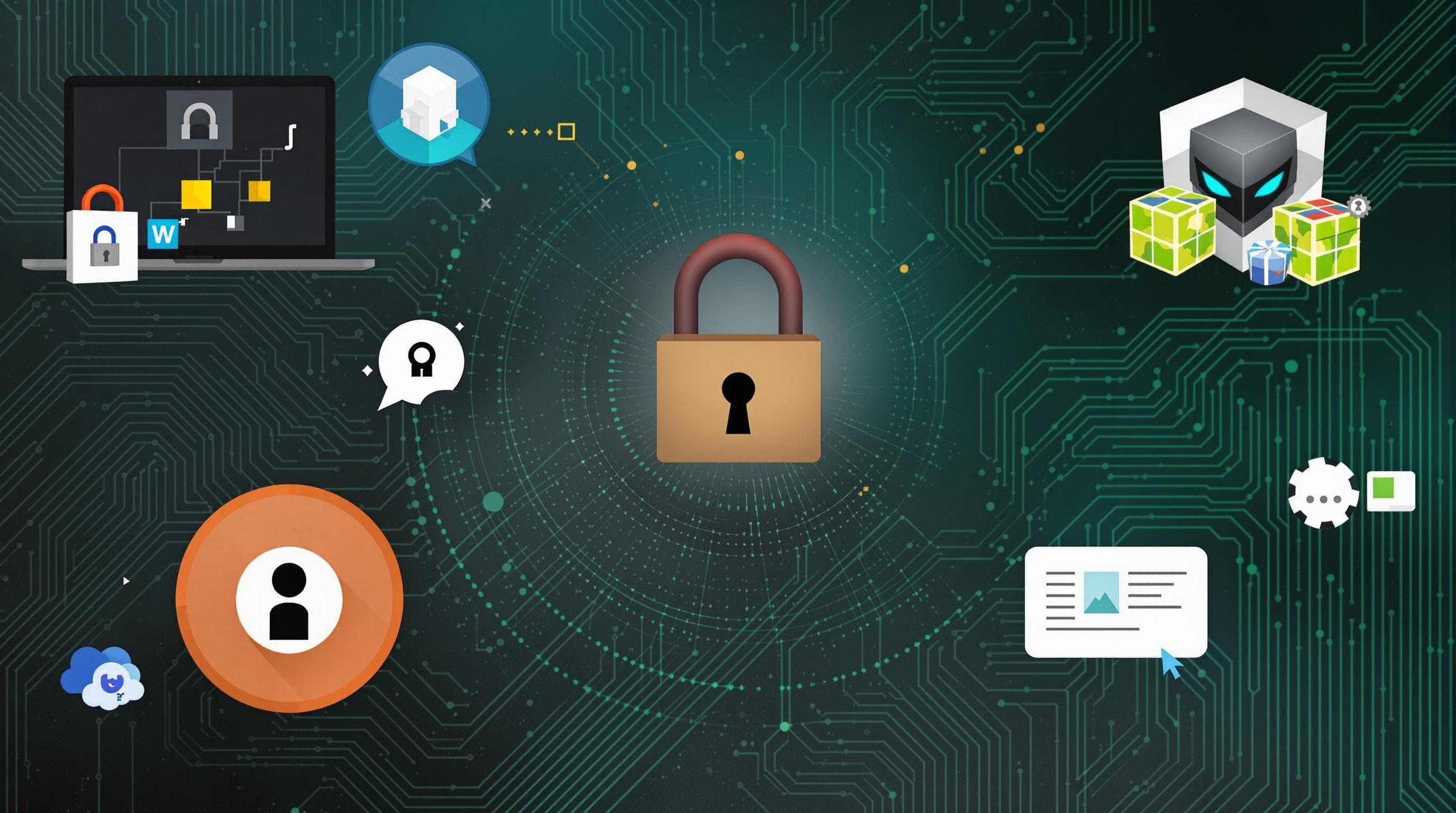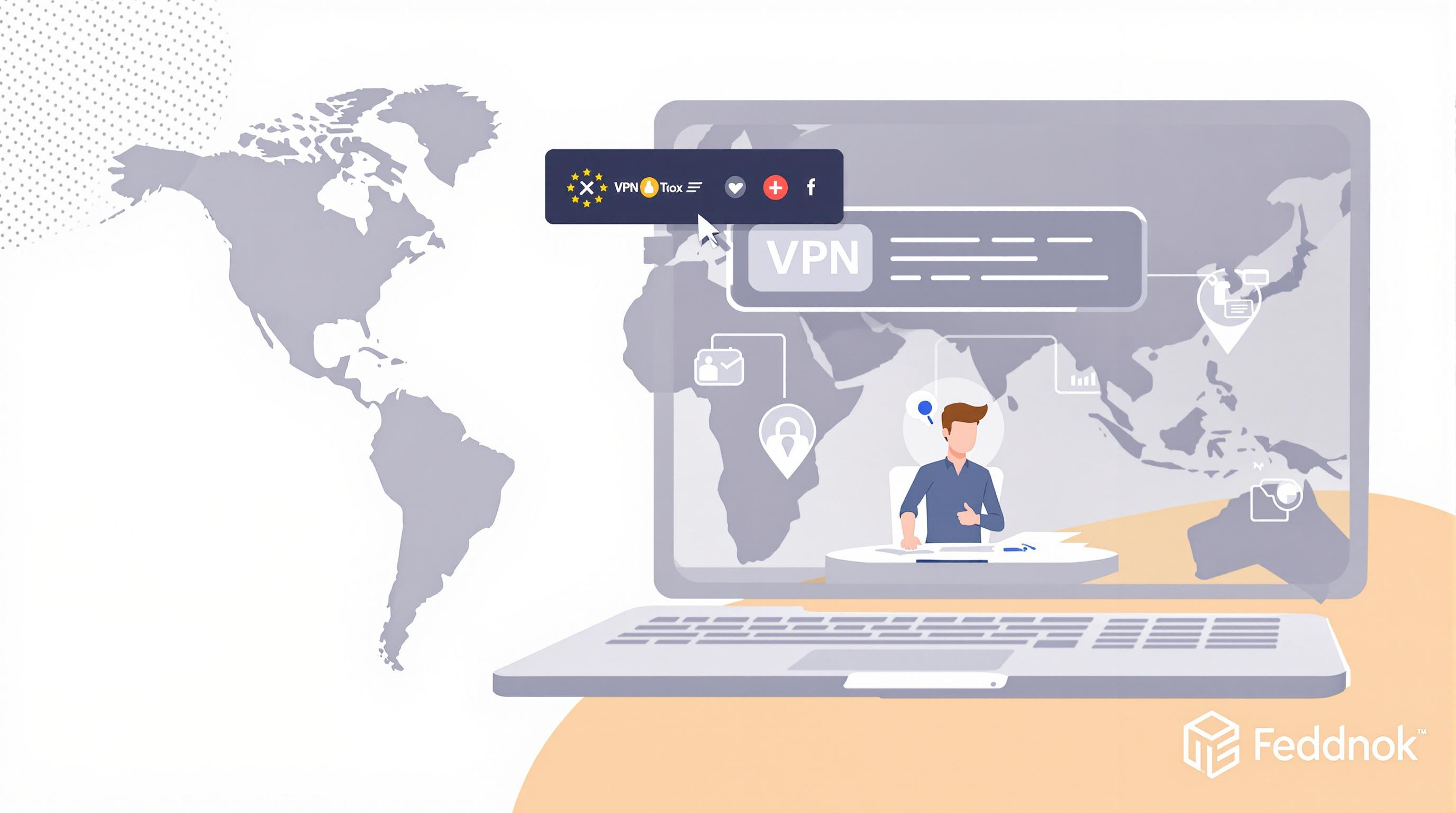Related Articles
- 8 Innovative Password Safes Released Since 2019 Changing How We Protect Our Digital Lives
- Top 6 Revolutionary Password Vaults Debuting Since 2019 That Are Disrupting Cybersecurity Norms
- 7 Innovative Browsers Released Since 2019 That Redefine Online Confidentiality and User Control
- Exploring Psychological Barriers to Adopting Enhanced Mail Safeguards Among Diverse User Groups
- Top 6 Privacy-Focused Browsers Launched Since 2019 That Outsmart Data Trackers Effortlessly
- How Antivirus Software Influences Environmental Footprints: Assessing Energy Use and Electronic Waste Trends
9 Essential VPN Setup Steps for Safeguarding Small Business Networks Against Emerging Cyber Risks in 2024
9 Essential VPN Setup Steps for Safeguarding Small Business Networks Against Emerging Cyber Risks in 2024
9 Essential VPN Setup Steps for Safeguarding Small Business Networks Against Emerging Cyber Risks in 2024
Introduction: The Growing Need for VPNs in Small Business Security
In 2024, cyber risks targeting small businesses continue to escalate in both frequency and sophistication. Emerging threats such as ransomware attacks, phishing scams, and data breaches are increasingly exploiting vulnerabilities within business networks. Small businesses, often with limited IT resources, are especially vulnerable to these evolving cyber threats.
To combat these challenges, many small businesses are turning to Virtual Private Networks (VPNs) to enhance their cybersecurity posture. VPNs provide encrypted tunnels for data transmission, protecting sensitive business information from interception and unauthorized access. According to a 2023 report by Cybersecurity Ventures, over 60% of small businesses experienced some form of cyber attack in the past year, highlighting the critical need for proactive defenses like VPNs.
This article outlines nine essential steps for setting up a VPN tailored specifically to safeguard small business networks against emerging cyber risks in 2024. By following these steps, SMBs can establish a robust security framework that mitigates risks and enhances overall network integrity.
1. Evaluate Your Business Network and Security Needs
Before selecting and configuring a VPN, it is vital to assess your business’s unique network infrastructure and security requirements. This involves auditing the types of devices, applications, and services your team uses daily. Understanding where sensitive data resides and how it flows across the network will help identify critical protection points.
Additionally, you should evaluate the specific cyber threats relevant to your industry and operational model. Certain sectors, such as healthcare and finance, face stringent compliance regulations (like HIPAA or PCI-DSS) that impact VPN configurations. Tailoring your VPN setup to these parameters ensures that security measures are both practical and compliant.
A thorough needs assessment lays the groundwork for selecting an optimal VPN solution and crafting a deployment plan that aligns with your business goals and risk posture. This upfront diligence saves time and resources while maximizing security benefits.
2. Choose the Right VPN Protocol for Your Business
Selecting a VPN protocol is one of the most critical steps in establishing a secure connection. Common protocols include OpenVPN, WireGuard, IKEv2/IPSec, and L2TP/IPSec, each with strengths and weaknesses related to encryption strength, speed, and compatibility.
For small businesses in 2024, WireGuard has gained significant popularity due to its modern cryptography, lightweight design, and speed advantages. OpenVPN remains a reliable and well-supported option with strong security features and cross-platform compatibility. IKEv2 is also favored for its ability to maintain stable connections on mobile devices.
Understanding protocol differences and selecting one that balances security and performance based on your use case is essential. Collaboration with IT professionals or cybersecurity consultants can aid in making an informed decision aligned with current best practices.
3. Select a Reliable VPN Provider or Set up a Self-Hosted VPN
This step involves deciding whether to use a reputable third-party VPN service or deploy a self-hosted solution. Each approach has merits and considerations shaped by factors like budget, control, expertise, and scalability.
Third-party VPN providers often offer ease of use, regular updates, diverse server locations, and professional support—beneficial for SMBs with limited IT resources. However, it is crucial to vet providers for strong privacy policies, no-log commitments, and robust encryption standards. Sources like the Electronic Frontier Foundation (EFF) recommend researching customer reviews and independent audits.
Alternatively, self-hosted VPNs grant businesses greater control over their data and infrastructure, potentially reducing dependency risks. This option requires dedicated technical skills and resources to maintain security effectively. For tech-savvy SMBs, self-hosted VPNs can be an investment in long-term data sovereignty.
4. Configure Strong Authentication Mechanisms
Authentication is the gateway that determines who can access your VPN and, by extension, your network. Employing strong authentication enhances security by minimizing unauthorized access risks. Multi-factor authentication (MFA) combines something users know (password) with something they have (security token) or something they are (biometric), significantly strengthening user verification.
In 2024, MFA is widely recognized as a cybersecurity best practice and is supported by most VPN services. Incorporating it into your VPN setup ensures that compromised credentials alone are insufficient for breaches. Additionally, using complex passwords and regularly updating authentication credentials are essential complementary measures.
SMBs should also consider using certificate-based authentication for devices, which offers strong cryptographic guarantees and reduces reliance on passwords. Properly configuring these authentication methods supports a secure VPN environment.
5. Implement Robust Encryption Standards
Encryption safeguards data by encoding it so that only authorized parties can decode and read it. VPNs rely on encryption protocols to secure data traveling between clients and servers. Choosing robust encryption algorithms directly impacts the efficacy of your VPN security.
For small businesses, AES (Advanced Encryption Standard) with 256-bit keys is considered the gold standard in encryption strength. This symmetric-key encryption is widely used to protect sensitive information and is supported by most VPN providers. Avoid outdated or weak encryption methods such as PPTP or 40-bit encryptions, which are vulnerable to attacks.
Continuous updates to encryption algorithms and regular review of security configurations ensure protection keeps pace with emerging cyber threats. Industry guidelines from organizations like NIST (National Institute of Standards and Technology) provide authoritative recommendations for encryption standards.
6. Define Clear VPN Usage Policies and Access Controls
Setting explicit policies around VPN usage is key to minimizing misuse and vulnerabilities. Define who can connect to the VPN, under what conditions, and what resources users are authorized to access. Practices like the principle of least privilege ensure users have only the permissions necessary to perform their roles.
Access controls can be implemented using role-based access control (RBAC) systems, assigning user permissions based on job functions. This reduces risks stemming from excessive or unnecessary access rights. Monitoring VPN usage and logging connections help detect anomalies and potential intrusion attempts early.
Communicating these policies clearly to all employees and enforcing compliance via technological controls strengthens your overall security framework. Regular audits and policy updates keep controls effective against evolving threats.
7. Ensure VPN Client and Server Software Are Regularly Updated
VPN software must be continually maintained to protect against newly discovered vulnerabilities and exploits. Software vendors regularly release updates and patches to enhance security features and fix bugs. Neglecting timely updates can leave your VPN infrastructure exposed to cyberattacks.
Establish a routine maintenance schedule for both VPN client applications on user devices and VPN server software. Automate updates where possible and verify the integrity of software updates to prevent tampering. Small businesses should educate employees on the importance of installing updates promptly.
Complementing VPN software updates with overall network security hygiene—such as firewalls, antivirus programs, and intrusion detection systems—creates multiple defense layers that deter attackers.
8. Test VPN Performance and Security Before Deployment
Before rolling out VPN access broadly, conduct thorough performance and security testing. This ensures the VPN operates effectively without adversely impacting network speeds or user productivity. Latency and bandwidth considerations are important for smooth remote work operations.
Security testing should include penetration tests and vulnerability scans to identify weaknesses in the VPN setup. Employing external cybersecurity experts can provide unbiased assessments and valuable remediation recommendations. Testing helps validate encryption, authentication, and access control mechanisms.
By addressing potential issues prior to deployment, small businesses can minimize disruptions and reduce the risk of breaches. Effective testing builds confidence in the VPN’s robustness and reliability.
9. Train Employees on VPN Usage and Cybersecurity Best Practices
Technology alone does not guarantee network security; user behavior plays a critical role in mitigating cyber risks. Employee training programs should cover proper VPN usage, recognizing phishing attempts, and safe internet habits. Awareness reduces risks of credential theft and inadvertent exposures.
Regular cybersecurity training and simulated exercises help reinforce good practices and keep security top of mind. Training should emphasize the importance of connecting to the VPN whenever accessing business resources remotely and never sharing VPN credentials.
Small businesses that cultivate a security-conscious culture complement technical safeguards with human vigilance, significantly enhancing their defense against emerging cyber threats in 2024 and beyond.
Conclusion
Safeguarding small business networks from emerging cyber risks in 2024 requires a proactive and comprehensive approach to VPN setup. By carefully evaluating needs, selecting appropriate protocols, enforcing strong authentication and encryption, and fostering user awareness, SMBs can build resilient defenses. Regular maintenance, policy enforcement, and testing complete the security framework necessary to protect sensitive business data and maintain operational continuity.
Implementing these nine essential VPN setup steps positions small businesses to mitigate threats effectively in an increasingly hostile cyber landscape. Investing in robust VPN security is not only prudent but essential for sustaining trust and business success.
For further best practices and evolving cybersecurity insights, reputable sources include the Cybersecurity & Infrastructure Security Agency (CISA) and the National Cyber Security Centre (NCSC).*




